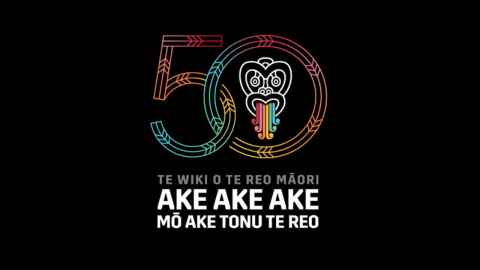Fifty years of Te Wiki o Te Reo Māori: honouring language activism
15 September 2025
As Aotearoa marks 50 years of Te Wiki o te Reo Māori, Waipapa Taumata Rau, University of Auckland reflects on its role in revitalising te reo Māori.
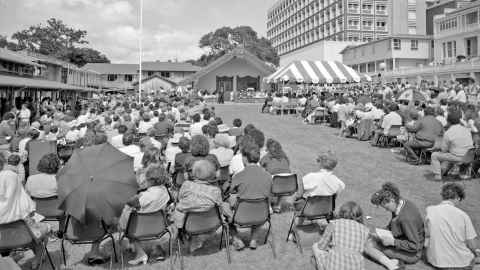
This week marks 50 years since the establishment of Te Wiki o Te Reo Māori, following the 1972 Māori Language Petition. Led by Ngā Tamatoa, the Te Reo Māori Society, and other youth groups, the petition called for te reo to be taught in schools. It was signed by more than 30,000 people and presented to Parliament by the late activist Hana Te Hemara (1942-1999, Te Āti Awa). It sparked the first official Māori Language Week in 1975 and paved the way for te reo to be recognised as an official language in 1987.
From the activism of Ngā Tamatoa on University Campus in the 1970s, to the leadership of today’s tauira (students), kaimahi (professionals), and kairangahau (researchers), the University of Auckland has been part of the movements that reshaped the place of te reo in schools, universities, and communities. Here are just some of the influential people who have shaped te reo Māori at Waipapa Taumata Rau.
Ngā Tamatoa
Formed at the University of Auckland in 1970, Ngā Tamatoa emerged from the Young Māori Leaders Conference organised by Emeritus Professor Ranginui Walker. This pioneering group of young activists, inspired by global Indigenous and liberation movements, championed Māori rights, advocating for te reo Māori, including the landmark 1972 Māori Language Petition, and upholding the principles of the Treaty of Waitangi. Living by the motto “Tama tū, tama ora; tama noho, tama mate, tamatoa,” they fought for language, land, and political representation, engaging in nationwide actions such as the 1975 Land March and the famous 1979 Haka Party protest.
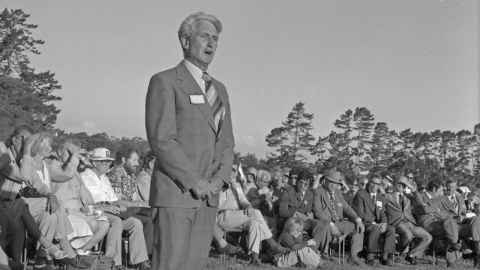
Professor Bruce Grandison Biggs (Ngāti Maniapoto)
Professor Bruce Grandison Biggs (1921–2000) was a pioneering New Zealand linguist and the first academic appointed to teach te reo Māori at a New Zealand university. Born in Auckland, he completed his PhD at Indiana University in 1957, focusing on the structure of New Zealand Māori. In 1951, he became a lecturer in Māori Studies at the University of Auckland, marking the beginning of formal Māori language education at tertiary level. Biggs developed the first university curriculum in Māori language, culture, and literature, published influential works including The Complete English-Māori Dictionary, and trained a generation of Māori scholars who became leaders in language revitalisation. Honoured with a CBE and elected a Fellow of the Royal Society, his scholarship laid enduring foundations for both academic study and the community resurgence of te reo Māori.
Emeritus Professor Ranginui Walker, DCNZM (Te Whakatōhea)
Professor Ranginui Walker (1932–2016) was a distinguished academic, activist, and pivotal figure in Māori education and language revitalisation. As the first Pro Vice-Chancellor Māori at the University of Auckland, he played a foundational role in establishing Māori Studies as a formal academic discipline. His leadership in the 1970s and 1980s was instrumental in the creation of kōhanga reo, kura kaupapa Māori, and wānanga, initiatives that have been crucial in the resurgence of te reo Māori and Māori cultural identity.
Walker was also a prolific writer and commentator, known for his incisive columns in The New Zealand Listener and Metro, where he addressed issues of Māori rights, identity, and the implications of the Treaty of Waitangi. His influential book, Ka Whawhai Tonu Mātou / Struggle Without End, remains a seminal work in understanding Māori political thought and activism.
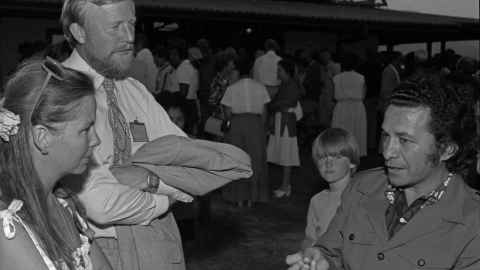
Sir Patu Wahanga Hohepa KNZM (Ngāpuhi, Te Mahurehure, Te Ātiawa)
Hohepa (1936-2023) was an internationally renowned Māori linguist and educator. After completing his doctorate at Indiana University, he returned to Aotearoa to establish Māori language programmes at the University of Auckland and became a leading advocate for a campus marae, realised with the creation of Waipapa Marae.
A champion of te reo Māori revitalisation, he played a pivotal role in kōhanga reo, kura kaupapa Māori, and wānanga, and served as Commissioner of the Māori Language Commission. Knighted in 2022 for his lifelong contributions and legacy in education, language and Māori cultural leadership.
Emeritus Professor Sir Hugh Kāwharu, KNZM (Ngāti Whātua)
Kāwharu (1927-2006) was a distinguished anthropologist and Māori leader who seamlessly integrated scholarship with iwi leadership. He held the foundation Chair of Social Anthropology and Māori Studies at Massey University from 1970 to 1984 and later served as Professor of Māori Studies at the University of Auckland.
In 1993, he became the inaugural director of the James Henare Māori Research Centre, establishing a research programme relevant to tribal groups in Te Tai Tokerau. Sir Hugh authored influential works such as Māori Land Tenure: Studies of a Changing Institution (1977), which examined the complexities of Māori land rights and tenure systems. His academic leadership extended to serving as President of the Polynesian Society and as a consultant to the United Nations' Food and Agriculture Organization (FAO) and UNESCO.
Sir Hugh was also deeply committed to his iwi, chairing the Ngāti Whātua Ōrākei Trust Board for 26 years.
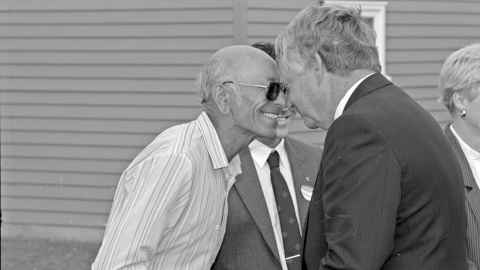
Dr Merimeri Penfold, CNZM (Ngāti Kuri)
Dr Merimeri Penfold (1921-2014) was a pioneering Māori educator and advocate for te reo Māori. Often remembered as the “best teacher” by alumni, Penfold was the first Māori woman to teach te reo Māori at a New Zealand university. She lectured at the University of Auckland for more than 30 years, championing Māori language and culture. One of the earliest Māori women to earn a Bachelor of Arts, she was appointed a Companion of the New Zealand Order of Merit in 2001 for her services to Māori. She contributed to the Māori Education Foundation, the University Marae Establishment Committee – heavily involved in the establishment of Waipapa Marae – and served as a Human Rights Commissioner. She also translated Shakespeare’s sonnets into te reo Māori in a book called Ngā Waiata Aroha a Hekepia.
Sir Haare Williams, KNZM (Ngāi Tūhoe, Te Aitanga-a-Māhaki)
A former Dean of Education at the University of Auckland, Sir Haare Williams is a distinguished Māori writer, broadcaster, and cultural leader. Raised in a te reo Māori-speaking Tūhoe whānau, he developed a deep connection to language and culture that shaped his creative expression. A co-founder of Ngā Puna Waihanga, the Māori Artists and Writers Association, he played a pivotal role in the Māori arts movement, served as the inaugural general manager of Te Reo o Aotearoa radio, and later acted as cultural adviser for Auckland City Council.
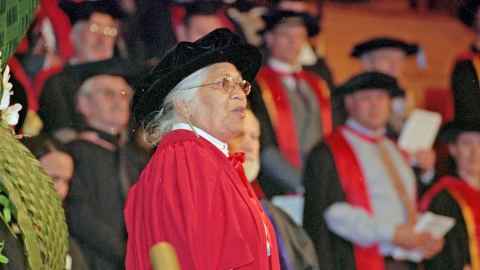
Dr Tāwhiri Williams, CNZM, and Dr Kaa Williams, CNZM
Dr Tāwhirimātea and Dr Kaa Williams are esteemed pioneers in Māori-medium education. In 2000, they founded Te Wānanga Takiura o ngā Kura Kaupapa Māori o Aotearoa, a leading institution dedicated to training educators in total immersion Māori language education. Their visionary work has profoundly influenced the development of te reo revitalisation and the broader Māori education landscape, but more importantly, a hope of reconnection to culture and whakapapa for tauira who are on their reclamation journey.
In recognition of their decades of service and commitment to Māori education and culture, both were conferred with honorary doctorates of literature by the University of Auckland in a ceremony held at Waipapa Marae on 20 March 2024.
Tarutaru Rankin (Ngāpuhi, Ngāti Hine)
Affectionately known as Taru (1931-1984), he was a Māori education pioneer whose vision transformed Māori presence on university campuses. In 1983, the University’s first marae, Te Aka Matua o te Pou Hawaiki, emerged when a prefabricated building was creatively converted into a marae – thanks to Taru. His work culminated in the construction of Tūtahi Tonu, a wharenui that became a hub for te reo, tikanga, student connection, and thriving teachers, as it was originally Auckland Teachers College. Designed to embrace both Māori and Pacific identities, his vision continues to inspire inclusive spaces, such as Ngā Tauira Marae, opened at the City Campus in 2024.
Taru passed at 53-years-old, less than two months after the official opening of Tūtahi Tonu in 1983.
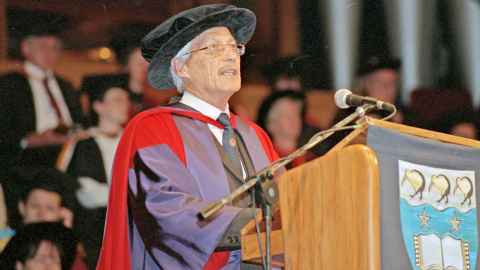
Waipapa Marae and Ngā Tauira Marae
Over four decades, marae have been woven into the University’s fabric, each carrying a distinct role.
- Te Aka Matua o te Pou Hawaiki (Tūtahi Tonu) (1983) nurtured generations of teachers and was a home for many Māori and non-Māori alike. Though it isn’t a traditional marae, it served as a landing place for many tauiwi, with artworks or toi-Māori inside the whare depicting many different cultures.
- Waipapa Marae (1988), named and gifted by Ngāti Whātua Ōrākei, became the University’s principal marae and a symbol of enduring partnership. The opening ceremony was packed with people, including media documenting the historic event. Waipapa would eventually inspire other education settings to establish their own marae.
- Ngā Tauira Marae (2024) situated on the University’s City Campus, Ngā Tauira marae provides a dedicated student space for well-being, learning and reo revitalisation. It carries the history and memories of Tūtahi Tonu, following its move from Epsom Campus. Alumni who learnt in Tūtahi Tonu hope to see a generation of leaders come from it and serve students the way it has served them.
A living commitment
Today, Waipapa Taumata Rau continues to build on these foundations. The University Library’s ReoSpace is a special area in the library where te reo is the primary language, and the Te Kūaha app supports learners with pronunciation, mōteatea and everyday expressions.
Gifted by Ngāti Whātua Ōrākei in 2021, the University’s Māori name – Waipapa Taumata Rau – affirms its responsibility to te reo. The Language Plan for the Revitalisation of Te Reo Māori 2020-2025 committed to normalising te reo across teaching, research and campus life. A refreshed plan is set to be launched this year, reflecting on the achievements of the past five years, and making space for new milestones.
